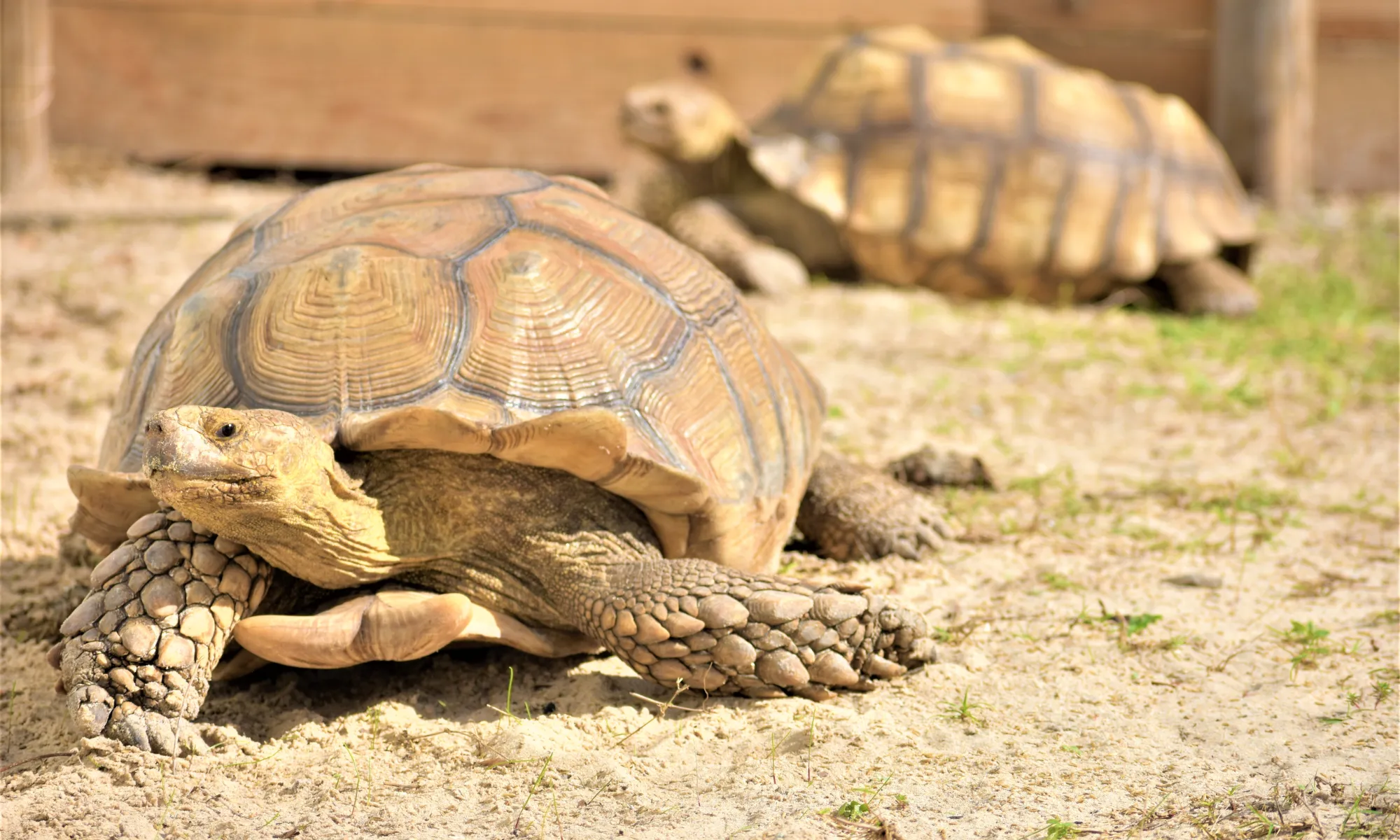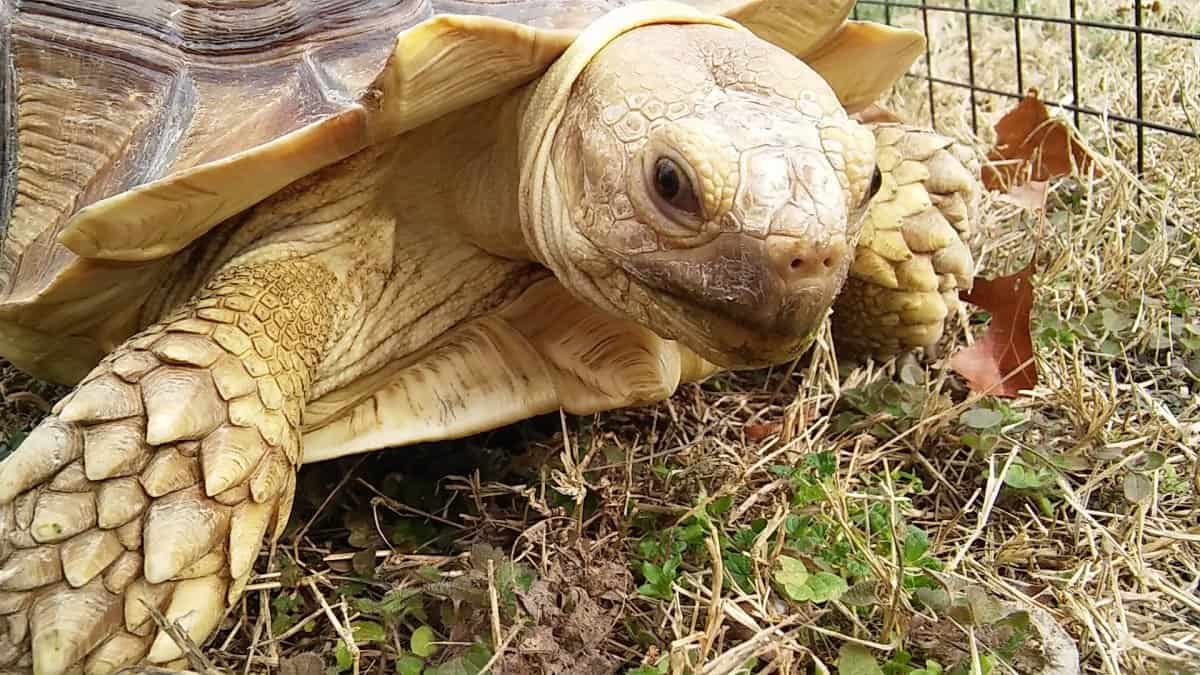Breeding Sulcata tortoises involves ensuring a large outdoor enclosure with proper temperatures, providing a nutritious diet, and allowing for natural mating behaviors to occur.
From Courtship to Hatchlings: The Complete Process of Breeding Sulcata Tortoises
Sulcata tortoises, also known as African spurred tortoises, are one of the largest species of tortoise in the world. They are native to the southern edge of the Sahara Desert in Africa and are well adapted to hot, arid climates. These tortoises can live for over 70 years and can grow to be over 200 pounds in weight. They are herbivores, feeding on a diet of grasses, leaves, and other plant matter. Sulcata tortoises are known for their friendly and docile nature, making them popular pets for reptile enthusiasts.
Sulcata tortoises require a large outdoor enclosure with plenty of space to roam and graze. They are also sensitive to cold temperatures and require a warm, dry environment to thrive. It’s important to understand the specific needs of these tortoises in order to provide them with the proper care and habitat.
Creating the Right Habitat for Breeding
When it comes to breeding Sulcata tortoises, creating the right habitat is crucial for their health and well-being. Breeding pairs should be housed in a large outdoor enclosure with plenty of space to roam and graze. The enclosure should be well-protected from predators and should have a secure fence to prevent escape. It’s also important to provide plenty of hiding spots and shelter from the sun, as well as a shallow water dish for drinking and soaking.
The substrate in the enclosure should be a mix of sand and soil, which will allow the tortoises to dig and lay their eggs. The enclosure should also have a variety of plants for the tortoises to eat, as well as rocks and logs for basking. It’s important to provide a warm, dry environment for breeding pairs, as they are sensitive to cold temperatures. By creating the right habitat for breeding, you can help ensure the health and well-being of your Sulcata tortoises.
Selecting Healthy Breeding Pairs
Selecting healthy breeding pairs is essential for successful breeding of Sulcata tortoises. It’s important to choose tortoises that are in good physical condition and free from any signs of illness or disease. Look for tortoises that are active, alert, and have a healthy appetite. It’s also important to consider the age and size of the tortoises, as well as their compatibility with each other.
When selecting breeding pairs, it’s important to consider their genetic diversity in order to avoid inbreeding. Inbreeding can lead to genetic defects and health problems in offspring, so it’s important to choose breeding pairs that are not closely related. By selecting healthy breeding pairs, you can help ensure the success of your breeding program and the health of the offspring.
Providing Proper Nutrition for Breeding Tortoises
Proper nutrition is essential for breeding Sulcata tortoises. Breeding pairs should be fed a diet that is high in fiber and low in protein, as well as a variety of vitamins and minerals. Their diet should consist of a variety of grasses, hay, and leafy greens, as well as occasional treats such as fruits and vegetables. It’s important to provide a balanced diet that meets the nutritional needs of breeding tortoises in order to support their reproductive health.
In addition to a healthy diet, breeding pairs should also have access to calcium supplements to support egg production and shell development. It’s important to provide a shallow water dish for drinking and soaking, as well as a source of natural sunlight or UVB lighting to support their overall health. By providing proper nutrition for breeding tortoises, you can help ensure the success of your breeding program and the health of the offspring.
Monitoring Breeding Behavior and Mating
Monitoring breeding behavior and mating is an important part of successful breeding of Sulcata tortoises. Breeding pairs should be observed regularly for signs of mating behavior, such as courtship displays, mounting, and copulation. It’s important to provide a suitable environment for breeding pairs that encourages natural mating behavior, such as a large outdoor enclosure with plenty of space to roam and graze.
It’s also important to monitor the female for signs of egg laying, such as digging behavior and restlessness. Once mating has occurred, it’s important to monitor the female for signs of pregnancy and provide her with a suitable nesting site for laying her eggs. By monitoring breeding behavior and mating, you can help ensure the success of your breeding program and the health of the offspring.
Caring for Eggs and Hatchlings
Caring for eggs and hatchlings is an important part of successful breeding of Sulcata tortoises. Once the female has laid her eggs, it’s important to carefully remove them from the nesting site and place them in an incubator or suitable container for hatching. The eggs should be kept at a consistent temperature and humidity level in order to support healthy development.
Once the eggs have hatched, it’s important to provide proper care for the hatchlings in order to support their health and well-being. Hatchlings should be kept in a warm, dry environment with access to natural sunlight or UVB lighting. They should be fed a diet that is high in fiber and low in protein, as well as a variety of vitamins and minerals. It’s important to provide proper nutrition and care for hatchlings in order to support their growth and development.
Ensuring the Health and Well-being of Breeding Tortoises
Ensuring the health and well-being of breeding tortoises is essential for successful breeding of Sulcata tortoises. Breeding pairs should receive regular veterinary check-ups in order to monitor their overall health and reproductive status. It’s important to provide a clean, well-maintained environment for breeding pairs that supports their natural behaviors and needs.
In addition to regular veterinary care, it’s important to provide proper nutrition, housing, and care for breeding tortoises in order to support their reproductive health. Breeding pairs should be housed in a large outdoor enclosure with plenty of space to roam and graze, as well as access to natural sunlight or UVB lighting. By ensuring the health and well-being of breeding tortoises, you can help ensure the success of your breeding program and the health of the offspring.
Conclusion
In conclusion, breeding Sulcata tortoises requires careful consideration of their specific needs and behaviors in order to support their reproductive health and success.
With proper care and attention, breeding Sulcata tortoises can be a rewarding experience for reptile enthusiasts and contribute to the conservation of this unique species.

